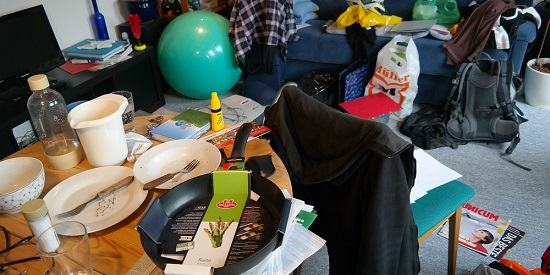What archaeology can teach us about consumer culture: Deakin researcher
Media release
If you're planning to spend this weekend doing some KonMari-inspired decluttering, a Deakin researcher says you should spare a thought for the archaeologists who'll have to sort through your garbage in 150 years.
Dr Sarah Hayes, a historical archaeologist within Deakin's Alfred Deakin Institute for Citizenship and Globalisation, looks at the quality of life and social mobility of people in 19th century Victoria by investigating their homes and garbage.
Dr Hayes said you could tell a lot about a society by what it threw away, and the waste of 19th century Victorians showed how modern-day consumer culture was nothing new.
"I spent many years painstakingly cataloguing artefacts before it really clicked that 19th century Victorians were incredibly wasteful," she said.
"Among the artefacts you find perfectly good ceramics discarded because they were no longer fashionable, complete bottles thrown out even though a bottle-washing factory was located just a few blocks away, even a rubbish pit at a drapers shop filled with perfectly good clothes and shoes.
"You'd think that items shipped halfway around the world would have value, be carefully mended or sold second-hand, but there's plenty of evidence from Melbourne’s archaeology that this just wasn’t the case."
Dr Hayes said fashion waste was also an issue during the Victorian gold rush.
"As Melbourne society was being shaped by the gold rush, the old determiners of status were becoming less relevant, and the old social hierarchies were being challenged as more and more people moved into the middle class," she said.
"People increasingly communicated their status through their stuff. Keeping up with fashion meant generating more and more waste, and the legacy of that thinking is still here, both in the ground and in our own society."
Dr Hayes said her experience showed there was no such thing as just throwing an item "away".
"As some of the biggest producers of waste in the world, Australians shouldn't be surprised that we have a long history of throwaway culture that dates back to the 19th century," she said.
"This has been painfully evidenced by salvage excavations undertaken by archaeologists across Melbourne. For instance, the working-class Little Lon district yielded more than 500,000 artefact fragments and the recent Metro Tunnel digs turned up close to one million fragments."
Dr Hayes said the discarded artefacts found in Victoria’s 19th century cesspits and garbage dumps showed that today's declutterers should consider the impact of their own consumerism, and the legacy they will leave behind.
"When we throw something away it doesn't just disappear – the thrill we get from being rid of unwanted objects, the joy sparked by a tidy drawer, that has lasting consequences outside our homes," she said.
"There's every reason to expect that archaeologists in the future will excavate our own landfills and talk about the insane wastefulness of our current era."

